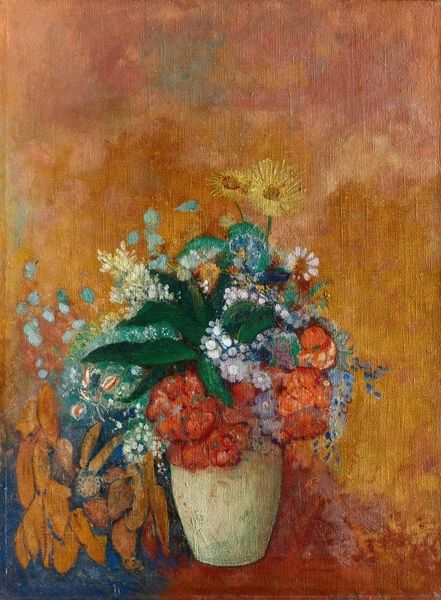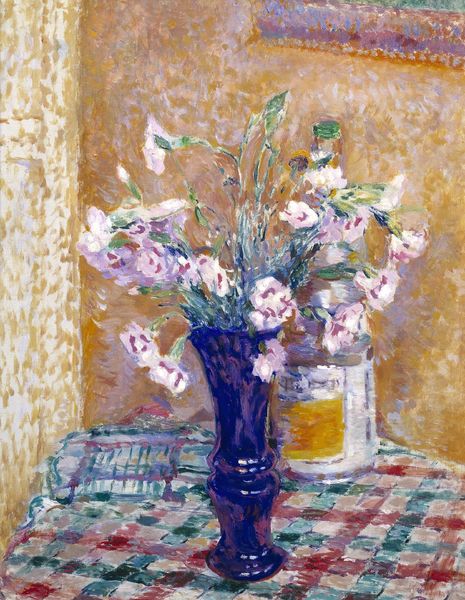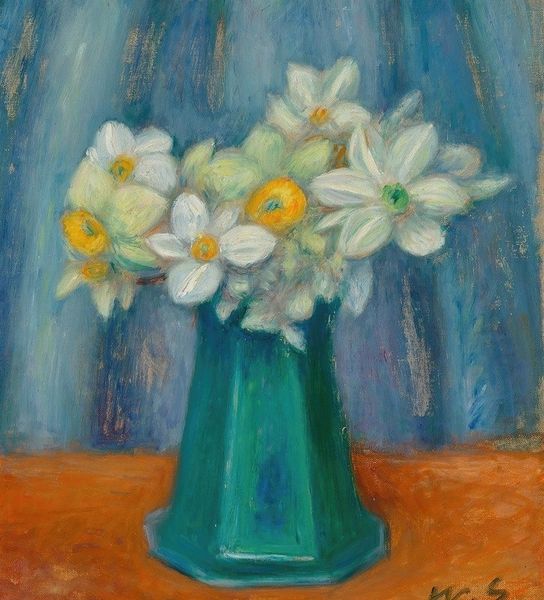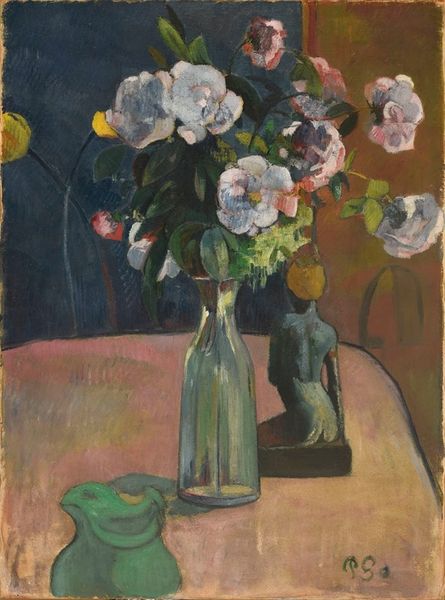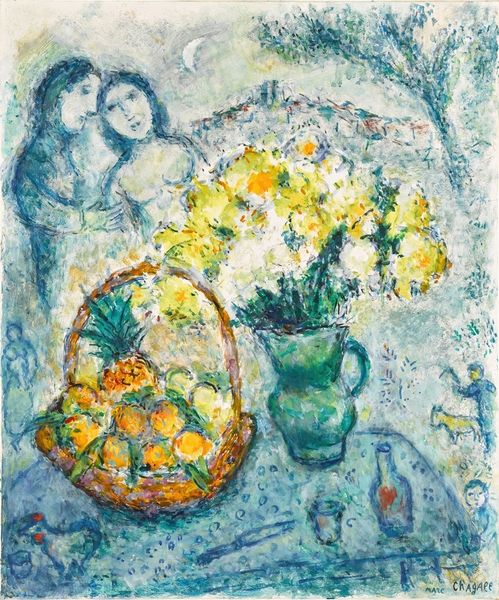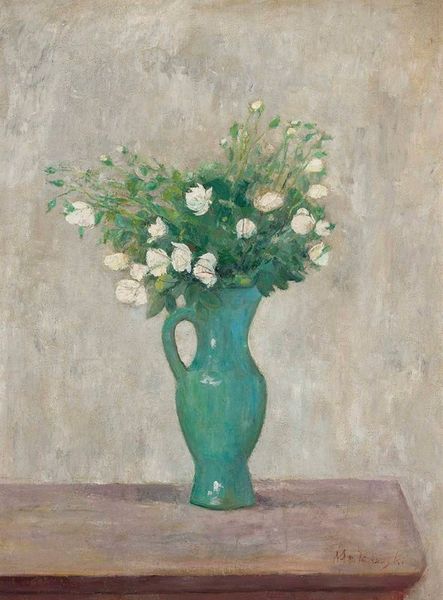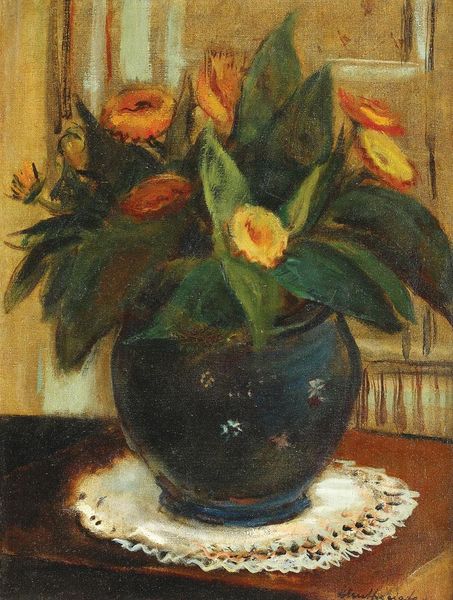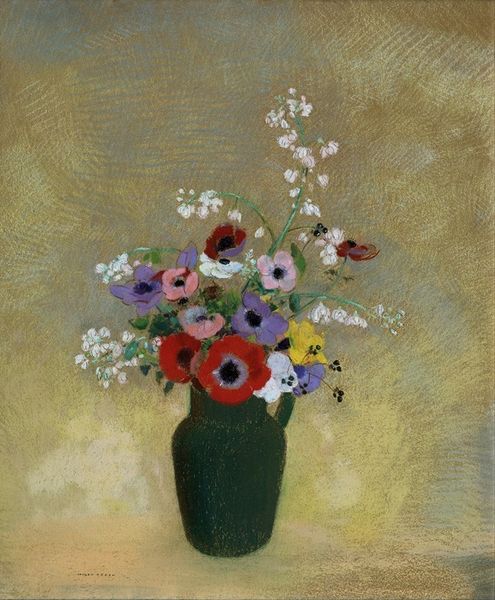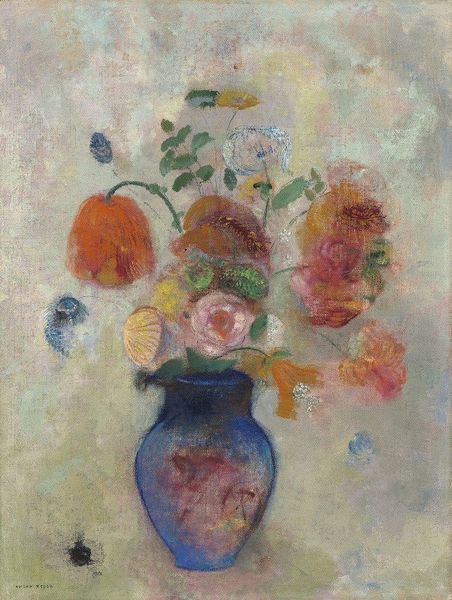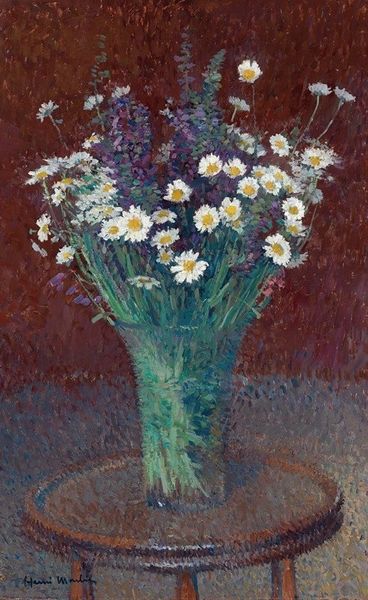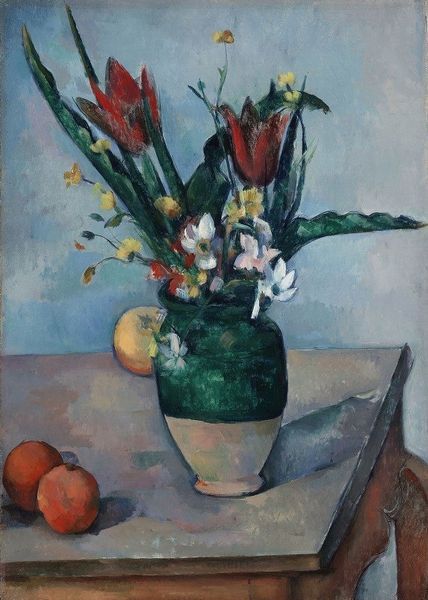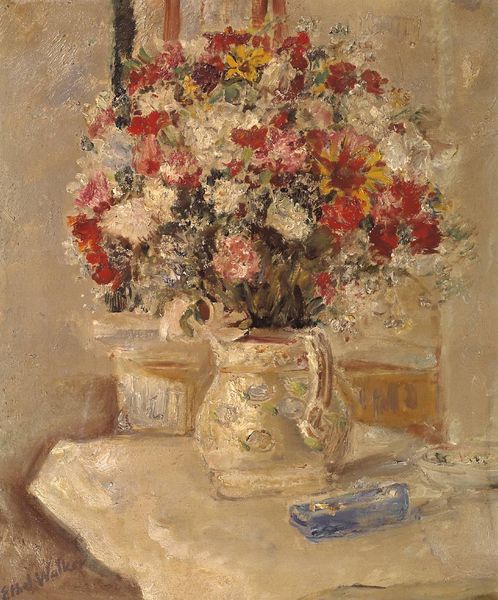
Copyright: Modern Artists: Artvee
Editor: Marc Chagall’s “Les marguerites,” painted in 1925 using oil paints, has a wistful, dreamlike quality for me. The muted colors and almost floating figures create a sense of longing. What symbolic meanings do you find in this piece? Curator: Chagall often employs a visual language deeply rooted in his personal history and Jewish culture. Here, even a seemingly simple bouquet of daisies can become a powerful emblem. Consider the couple nestled near the flowers. Do they evoke memories of love, loss, or perhaps a yearning for a vanished homeland? And the basket of fruit, does it suggest fertility, abundance, or something more temporal and fragile? Editor: That's a great point. I hadn’t considered the fruit in terms of its impermanence, or the daisies in terms of cultural symbols. Curator: Daisies themselves are multivalent. While often associated with innocence and purity, in some traditions, they symbolize farewell or remembrance. Their arrangement – almost overflowing – speaks to a certain emotional intensity, doesn't it? The Fauvist influence contributes to this heightened emotion through its vibrant color choices. Notice how the cool blues in the background set off the warmth of the oranges and yellows. Editor: Definitely, the Fauvist elements give it that expressive energy. It's fascinating how he layers these symbols, so a simple scene speaks volumes. I am now wondering if the couple might not be embracing or reminiscing on farewells, as daisies suggest. Curator: Exactly! The painting exists within that liminal space, where personal memory and shared cultural symbols intertwine. It reminds us how images have cultural weight over time. Editor: That gives me a fresh perspective on Chagall's work – seeing it as more than just dreamlike, but as a careful construction of memory and meaning. Curator: And it reminds us that art holds memories.
Comments
No comments
Be the first to comment and join the conversation on the ultimate creative platform.

